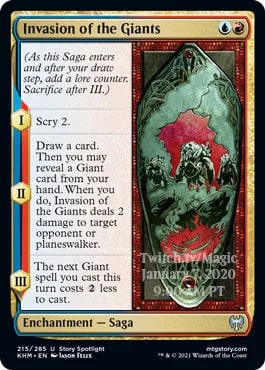I live in Minnesota, home of the Minnesota Vikings professional football team and the caricature of the horned helmed raider. The image of a ferocious and brutal warrior is commonplace in our shorthand cultural lens. They're hellbent on pillaging, sacking cities, slaughtering villages, and taking captives. Their history is complex, and while tv shows like Vikings and sets like Kaldheim show a thrilling narrative, reality is a bit more murky and nuanced than what we consume in mass media.
The Vikings, that is, the Norse people of the early Dark Ages (500-1000 for simplicity), were excellent warriors, but also incredible sailors, craftsmen, boat-builders, woodworkers, navigators, and traders. During the Viking age, Norse people apparently did not create art for art's sake. There are few examples of decorated objects having no purpose other than to display their ornamentation. Instead, Norse art is characterized by extraordinary ornamentation of everyday objects.
They were merchants, but also had poets, oral historians, fine artisans, and artists. Viking art ranges from intricate woodwork and jewelry, to carving on their longboats, and even pottery.

Raiders Karve by Aaron Miller
Today I am here to talk about Norse art, Viking art, giving a crash course in what to look for in Kaldheim of the six styles of Viking art during their roughly 300 years as a defined culture from 750-1050, with a little later in Sweden. The United States of America isn't even 250 years old, to put into perspective simply how short a time this period of history was in Northern Europe. Normal American courses don't even cover the Viking raids other than footnotes in the creation of pre-Industrial Britain.
I'd love to get into the nuances of history in depth, but we only have so many words, so I'll sprinkle in when appropriate to the art. And when I say art, Viking art is more comparable to what is more commonly known as craft.
They made practical pieces based on tradition, necessity over spectacle and frivolity. There is minimal art for art's sake. It was to be used, not just admired. Even as burial items, while they are ceremonial and commemorative, they had a specific function.
Sagas and tales, their songs, leatherwork and textiles are all art, but to keep this concise on art styles, they had to be omitted. Due to the more functional usage of art, artifacts that endured were stone objects, jewelry, and well preserved pieces of ships as compared to the more widely seen wood options, textile, and items that decomposed or deteriorated.
Before we get there, we need to frame what Viking or Norse art is, what it isn't, and why it only lasted a relatively short time in history.
The time period is the 8th century, which is considered the early middle ages with 1150 being a rough end time for vikings as we have them in our mind's eye.
Normally 500-1000 CE is the "dark ages," with 1000-1500 being the Middle Ages. This is not because of lost documents or people forgetting, it means a lack of primary sources. The printing press was not invented yet and Christian monks couldn't copy manuscripts very fast. Additionally, connections to Arabic libraries were not commonplace as the Arab invasion of the Iberian Peninsula in the early 8th century made knowledge sharing to trade difficult.
Just as we know the Middle ages separated Rome from the Renaissance and modern nation building, those neat 500 increment chunks are simplistic on purpose for people to grasp the idea, then investigate further. Viking art styles are similar.
To set the stage, the Roman empire is officially over, and around year 800, where we begin today, Charlemagne is crowned king of the Franks, and the Holy Roman Empire is happening in Mediterranean and French Europe.
The Greek and Roman "lost" knowledge? Well, that's a bit of a myth of the "dark ages." That term refers to few good primary sources, not that it was lost. Over in Baghdad, Mamum the great had a caliphate where Greek and Roman works were translated into Arabic.

Bazaar of Baghdad by Christopher Moeller
Art is a pretty big mishmash of a collapsed Roman empire, mixed with slavic, pagan, and a variety of sources in the middle of Europe. But during this time, between 780s CE and 1150 CE, there is a distinctive style of art - Viking Art.
The seven styles we are to learn today are Broa, Oseberg, Borre, Jelling, Mammen, Ringerike and Urnes.

Inga Rune-Eyes by Nico Delort
Broa - roughly 750 - 815/825 CE
The first of the styles of Viking art we'll cover today is Broa. There were a few earlier styles that were a bit rougher with individual ribbon animals or geometric framework. With some nuance into slavic and Finnish art, Broa makes sense to me on where to start. You may struggle to find much on it, and instead may need to look for Style III/E or Style E.
The style is often overlapping entirely, or combined with Oseberg, but they are marginally different. There was also the Berdal style at the same time as Broa/Oseberg, but that was more Danish with some other lowland European country sites and will be omitted. Broa is uniquely all Scandanavian, more common in the Eastern side of the group of countries.
The style Broa is named after an archaeological dig in Gotland, Sweden.

Image via google maps
What makes Broa a style is the clear composition. It's not geometry with symmetrical sides or perfect lines, but the repetition of basic compositional lines. In short, it looks intentional, thought out, but it's mathematical. For Broa, I'd think of Joan Miró as a visual shorthand. Thin and thick lines with larger objects, showing rough forms of objects. That's Broa.

Women, Birds and Stars by Joan Miró
Image via hurriyetdailynews.com
The name comes from the horse harness-mounts found at Broa. Here is close up of one of them, and an artist interpretation by Jonas Lau Markussen.

Images via viking.archeurope.info/

Image via JonasLauMarkussen.com
By looking at the main example, we can see motifs, a style emerges of deconstructed forms, knots, and lines winding in and out of characters.
 | 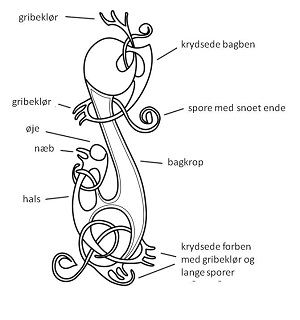 |
These latter Broa examples should feel familiar to you. Those circles have a Seussical feel to them. They represent more than should feel like realism.
Oseberg - 780 to 850 CE
This style derives its name from the Oseberg ship. This excavation was at the beginning of the 20th century and one of the best-preserved Viking ships in the world.
What does Oseberg mean? It was originally thought to be the tomb of Queen Asa, grandmother of Harald Harfagre, hence Oseberg. Asa's berg, Oseberg, as it were. Newest technology dated it more correctly, and now it's assumed to be Queen Alvhild, first wife of King Gudrod who was buried there.

Image via google maps
The main Oseberg thing to note is the gripping beast.
They grip the borders of their carving, they grip themselves, the paw's grip shows this decorative design. It's grabbing. This isn't a new thing, but being more common and found in similar examples around the time creates and shows something new over Broa.

Image via smarthistory.org
You start to see the similarities and how the Shapeshifter motifs were shaped by Viking art in the Oseberg very literally.

Crop of Mistwalker by Steve Prescott and Oseberg ship
The Viking Ship Museum at the Bygdoy peninsula in Oslo has a ton of these examples. And beyond the gripping beast you'll see:
- Stylized animal reliefs
- Designs that turn into known, visible, animals
- Carpet-like distribution of motifs of equal size and equal composition
- Faces in profile (on the side) nad facing forward
- Seeming asymmetry, but different in close detail
- Only Scandinavia, no outside elements/influences yet
Then you see the Oseberg ship mounts, and that carpeted design snaps into focus on what that means.

Image via Vegard Vike, Twitter
Borre 840-970 (850-950)
The Borre Mounds, the cemetery or Borrehaugene, is seven large and 21 smaller mounds, including cairns. There were highly preserved artworks here, differing and known as the Borre Style.

Image via Google Maps
This style continued the gripping beast motif, but now animals had a triangular head. More geometric knots and patterns were also in this style, ring chain, or a symmetrical interlaced pattern. That triangular head had almost a cartoonish face with round eyes, ears that are sticking out. This contorted body was found in a lot of areas across Scandinavian. I see it as the pig style with a triangle head and ears.
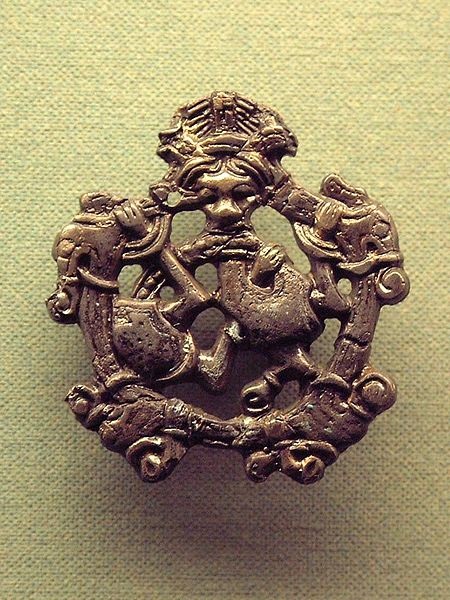 | 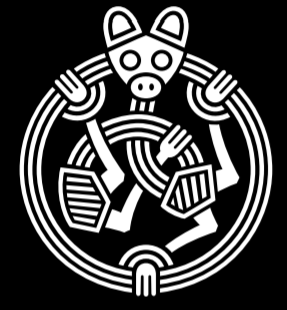 |
Image via jonaslaumarkussen.com/
The symmetrical interlaced pattern is not perfectly symmetrical, that would be more Celtic in origin. Thar harmonious and, most importantly, continuous line is not perfectly Viking in origin. We can split hairs in a follow up if Lorwyn ever comes back around!
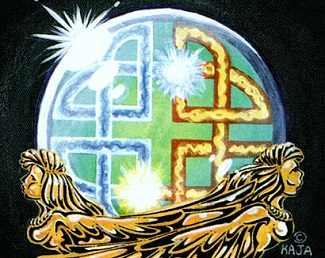 | 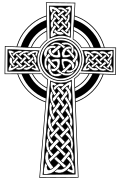 |
Around this time in history, Danish vikings had been raiding the British Isles for the last few decades and in 851, over 300 ships sail to London and sack the city of London and Canterbury.
Also, around this time, Rurik lead viking raids into Russia, establishing Novgorod and the Ruik Dynasty. Russian history is another matter entirely, but it's fun to note that Vikings, later called Varangians, began that dynasty. They also found new lands to make their own on Ravnica. It's a fun flavor tie in.
Jelling/Jellinge 870-980
The Jelling style signifies the unification of Harald I uniting the elves in Norway.
Harold I actually did this, and did unify Norway with the Battle of Hafrsfjord, no elves required. It was somewhere in the late 870s-900, as the Christian BC/AD calendar was not yet introduced to the Viking people.
Jelling refers to again, the site where it was found, in Jelling, Denmark.

Image via Google Maps
One of the main items is the Jelling Cup, a silver item found in one of the burial mounds.

Image via www.en.natmus.dk
Those ribbon animals? Get those pig faces out of here, we are back to classics. This breaks more toward symmetrical faced animals, and we have pigtails on animals, with curled upper lips and hooked hip joints instead of the previous styles we've seen.
Jelling overlapped with the Borre style and four main things make it unique:
- the ribbon animals are back again, and now are s-shaped
- side profile faces instead of head on
- Curled lip
- Hooked hip joints.
We see the clear face now, clearly as a design, with curled lip! If you see lips like that? Jelling!

Image via The Anatomy of Viking Art Ebook by Jonas Lau Markussen
Mammen 950-1000 ce
This style is named after a very special chamber grave site in Mammen, Denmark.

Image via Google maps
Most notable about this style is the unique axehead with Christian and Pagan iconography suited for both. The world tree Yggdrasil is also the Christian Tree of Life, showing an early indicator of Christianity's norm in Norse culture.
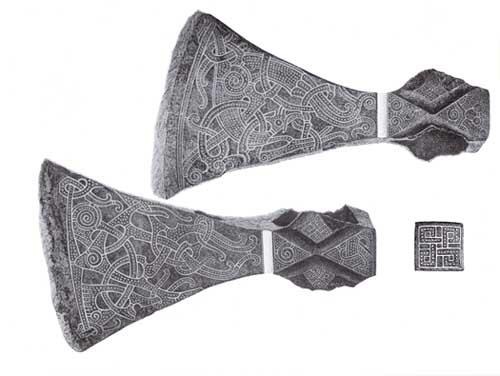 |
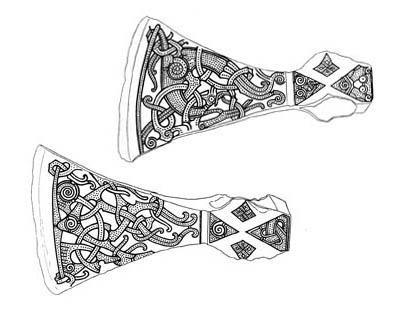 |
Ribbon and plant elements with great beasts like lions, larger snakes and birds is common in this style, with spiral shoulders and hips, like a nautilus shell. Note the highly asymmetrical style, and incredible dynamic motion of the figures.
As Jelling brings us back to ribbon animals, Mammen is larger, slightly more ribbons around the figures. Those ribbons show influence from mainland Europe, where more plants, vines and fauna are present in art. Early Christian influences, plants, and great beasts? That's Mammen.
You can see a few references to it like the post in Skemfar Shadowsage.

Close up of Skemfar Shadowsage by Matt Stewart
Art like the Weathered Runestone have the Yggdrasil tree on it, complete with ribbons!
But the runes aren't normal yet in Viking art, that comes next.
Ringerike - 990-1050ce
The Ringerike style is named after the Ringerike region of Norway. In this area, there is a ton of red sandstone stone carvings.

Image via Google maps
Animals you see in this style are long and thin. Runes were very common during this period. Plant ornamentation is common here. You look for red on large stones? That's Ringerike.
This is a direct influence from England with its runestones, but the great beast motifs are solely Scandinavian in origin. They are MUCH MORE complex than the previous Mammen style.
 |  |
Image via vanghistorielag.no
More than just gravestones, brooches, and other items you can see more elaborate work.

Image via Brooch, Ringerike Style. Espinge, Hurva, Skĺnde, Sweden.
Just as complexity in Italian Renaissance art went from Baroque to Rococo to more bits, more floral edges, and all over complexity, Ringerike is the most complex. It has almost a central American flair to the animal with tendrils, almost dreadlocks, or even a hat on.

Image via atlasobscura.com
Urnes style - 1050 - 1125/50 CE
The last style is of Urnes and is named after the Urnes Stave Church in Norway.

Image via Google Maps
If you've seen any UNESCO articles, or oldest wooden structures, this wooden constructed church shows up. It's a stave church, a medieval creature using post and lintel construction where the load bearing posts are called a stav in modern Norwegian.

Image via heritagetribune.eu
On the exterior of the church, the style becomes apparent with interwoven vines and animals in very tight, more thin, designs. Just like the Ringerike long and complex animals, you also see it here, but thinner, more high design and if there are eyes, they have almond eyes.

Image via historicalragbag.com
The Animals are often in profile and it's graceful. This is peak design, like a slimmed down font or a brand's logo that goes skinny. The Christian influence comes to its final stage, on a church, with pagan symbology of Viking art intertwined with plants surround the animals.
Highlighting pieces in color, can help focus the eye to see the forms, especially the slender aspect of the animals.

Image via smarthistory.org
They come alive just as seeing medieval Christian churches with paint on the white marble statues. These were all painted, making the forms much more present, rather than hidden.
At the end of the Viking age, the styles overlap a lot more, as Norway fully adopted Christianity and became the often-taught Christian middle aged art with religious iconography.
Though, like any culture with pagan myths, when a new religion is introduced, appropriation and fusion is common. Iceland is most notable or this, if you ever want to do some digging.
To summarize:
Viking art is considered early medieval art.
It is a fusion of animal forms and pattern. That is the Viking motif.
Practical art pieces were most common, with trading and pieces you can bring (like on a boat) normal. They also survived the most often, which we cannot discount that pottery, songs and other art forms were also made, just less focused visually like the art we are discussing here.
Art had function and doubles as a necessary item, not a frivolous or spectacle in creation, and expert and intricate crafts work is a classist term that means low art.
There are Seven styles of it.
- Broa is deconstructed animals with tight, deconstructed forms. Look for the serpent head and if you can't find a clear animal, and you get a Dr Suess vibe? Broa.
- Oseberg is stylized relief animal images. Look for interlace and knots which break up into ribbons. Faces forward and to the side.
- Borre style is gripping beasts with human and animal faces. Look for interlace but with loops, either as pure ornament or zoomorphic pattern. Pig face!
- Jelling style has S-shaped creatures with head, feet and tails. Look for interlaced ribbons with the creatures and the curled lip.
- Mammen style has large animal images. Look for plant-like patterns on animal limbs ending in a whorl.
- Ringerike style has the most runes. Look for artificial looking tendrils with spials and knots on large individual animals. Think Mayan with complexity.
- Urnes are thinner, much more stylized quadruped animals with ribbon-like animals and snakes.
Here is a quick overview, wonderfully made from Jonas Mau Markussen. He even has a free e-book if you want a download of the styles.

Image via JonasLauMarkussen.com
I think his animal heads really showcase the styles in profile, except for Borre, which needs the front pig face to really be known of course.

Image via sellfy.com/jonaslaumarkussen/
I hope you enjoyed learning about some lesser known art today and dig the Viking practical nature of their art, despite an incredibly short amount of time as a distinct style.
-Vorthos Mike
















